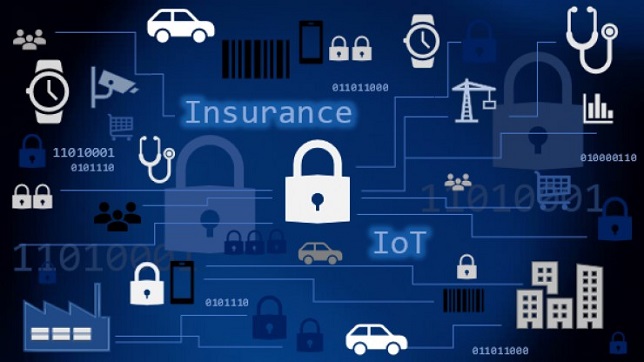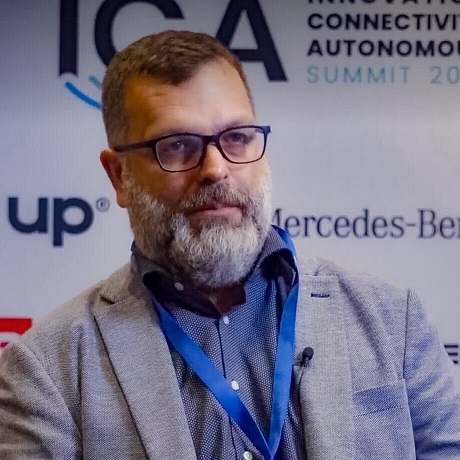The Path to Next Generation Platform for IoT-Powered Insurance

Disruption and innovation in the insurance world
Two current trends are significantly reshaping the global insurance industry: IoT technologies and Sharing Economy.
Internet of Things (IoT) is profoundly transforming the insurance sector because, for the first time, all actors in the ecosystem – customers, insurers, and the various stakeholders in other industries – can be directly connected. Products, tools, services, people, and organizations are now fully capable of connecting and communicating with each other through smart sensor networks.
A remarkable example is customer relationships today. Connecting with customers has never been so easy. Contact used to typically occur at point-of-sale, claims and renewal periods. Now, with the use of wearable devices, home automation and telematics, insurers can connect with customers on an ongoing basis and providing valuable feedback – and pricing – based on activity levels.
If this growth trend continues at the current rate, as estimated in the recent report published by Transforma Insight (2020), global IoT market is expected to grow to 24.1 billion devices in 2030, generating $1.5 trillion annual revenue, a compound annual growth rate (CAGR) of 11%. This means that IoT connectivity will become pervasive, as sensors will be embedded in the largest number of vehicles, buildings, appliances, and wearable devices that a typical household uses.
Considering predictions of analysts and industry experts, it is reasonable to assume that by 2025 each of us will have at least fifteen connected IoT devices, leading to an exponential increase in data. Given these estimates, it is not hard to understand how the impact of IoT technologies will be greater on the insurance industry – compared to other industries – which has always been data-centric and data-driven. Insurance companies around the world have long relied on historical data from policy administration solutions, claims management applications and billing systems to make informed decisions about risks, customers and more. What has changed recently is the availability of huge volumes of new data captured by sensors and other sources; this entirely new event is overwhelming the insurance business model upside down. The new industry leaders will be those who can process this explosion of data in a timely manner to make the right business decisions.
The dizzying and unstoppable rise of IoT applications, along with big data trends, are therefore paving the way for additional revenue streams, niches of products, innovated distribution options and new service opportunities primarily in the insurance world and in a variety of areas: Connected Car primarily, then Smart Manufacturing, Smart City, Smart Home, Connected Health, and Connected Public Administration.
INTERNET OF THINGS MARKET SCENARIOS 2019-2030
A second significant trend that is a source of disruptive innovation in the insurance industry is the Sharing Economy. The Sharing Economy, also known as collaborative economy, is an economic model centered on the practice of exchanging and sharing goods, knowledge and/or services that in recent years has completely redesigned social and consumption coordinates. The goal is to achieve economic, environmental, and social improvement. In fact, the sharing of goods and services allows not only to minimize the waste of resources and its environmental impact, but also to obtain a significant economic return. Moreover, the Sharing Economy makes it possible to achieve greater individual and collective wellbeing.
Entire productive sectors – from rental, to mobility, to real estate, to entertainment – have been involved in the transition towards the new paradigm of Insurance-as-a-service.
For some time now, insurance companies have been responding to this shift from product to service and from ownership to access. These are called upon to rethink all the steps of the value-chain, proving elasticity, adaptability, and speed. Thus, the entire sector seems to be converging on the following new assumptions: insurance products should all be focused on people’s needs, they should be smart, activated instantly, relieved of a lot of bureaucracy and with an increasingly short-term perspective.
In light of the above trends, it is clear that the insurance industry is on the edge of a radical change. However, with a few exceptions, the entire sector is still at an experimental level of implementing the potential enclosed in IoT technologies. That’s because it’s not just about introducing new technologies, but about the ability to manage complexity, having platforms that can integrate huge amount of data from IoT devices quickly and, above all, flexibly. In addition, the insurance world is a particularly complex industry with a more abstract customer experience, where – unlike the retail sector, for example – a push strategy still prevails over a pull strategy, i.e., products are still more brought to customers instead of being requested.
From Connected Car to Connected Insurance
Within the insurance sector, the motor insurance segment is certainly worthy of special emphasis as mobility is a source of a more sustainable economic, social, and environmental development.
The motor insurance industry has unquestionably been one of the sectors most affected by the effects of the Fourth Industrial Revolution which can be summed up by the blurring of the line between the digital and the physical world and realizing a shift from traditional networking to more digital interactions through mobile communication, social media, and online events.
The Covid-19 pandemic has merely accelerated processes that were already in place. One of these processes is precisely the digital transformation of entire economic sectors including finance, retail and logistics, marketing, and advertising, and automotive.
A careful reading of the statistics confirms this development trend.
In 2013, McKinsey estimated that the number of networked cars would rise by 30% a year. Two years later, Gartner predicted that there would be 250 million connected vehicles on the roads by 2020.
According to what emerges in the recent report published by Technavio (2021), it is reasonable to assume that connected vehicles will be the precursor to the large-scale proliferation of telematics insurance.
As the data clearly show, the Automotive Connected Car Platform market is projected to grow by USD 4.92 billion, registering a CAGR of almost 13% during 2021-2025.
CONNECTED CAR MARKET SCENARIOS
Connected cars generate an impressive amount of data and have tracking capabilities that can help insurers develop accurate pricing strategies based on consumers’ driving behaviour. The data collected by connected cars can also support insurers in streamlining the claims process and provide cost savings.
Many insurance companies, in fact, still have a lot of manual workflows. For instance, accident claims are typically reported to the insurance company by phone and require the submission of attached documentation. Long reporting times, incorrect or missing data, and imprecise descriptions result in avoidable additional workload for the customer and the claims handler during claims processing. This example is one of several scenarios where telematics data offers great value.
Telematics products create value both for customers – who can benefit from lower premiums and value-added services – and for insurers, as they gain benefits on their income statements.
Initially, about fifteen years ago, usage-based insurance (UBI) policies were mostly based on mileage and speed. Now, recent advancements in technology have increased the effectiveness, accuracy, and cost of using telematics, allowing insurers to capture data not only on how many miles people drive, but also on driving behaviours (i.e., data on speed, acceleration, hard braking, hard cornering, time of day, and phone use while driving). Thus, the outcome of this technological progress has been the growth of several variants of UBI model, which include Pay-As-You-Drive (PAYD), Pay-How-You-Drive (PHYD), Pay-As-You-Go, and Distance-Based Insurance that have helped improve the traditional actuarial models.
Current Telematics-based Insurance Challenges
Connectivity is turning the car into a smart device with the potential to become a crucial element in enabling and contributing to the spread of the Internet of Things (IoT).
Native connected vehicles can contribute to unlock the enormous business potential of the IoT industry, to unleash the value of vehicle data and, hence, to generate new revenue streams throughout a vehicle’s life cycle. The path to data monetization, however, is proving to be quite challenging.
In this regard, it is interesting to note that McKinsey (2021) has recently lowered the expected value of car data monetization by 2030 compared to what they predicted in their 2016 report. This is because the “uptake of car-data monetization has been slower than anticipated, making it impossible to reach the upper range cited in our original forecast”. According to McKinsey multiple factors account for this slowdown:
- Lack of immediate availability of particularly advanced skills among players along the value chain, especially OEMs.
- Slow development of new and more capable IT architectures.
- Slow pace on the part of various stakeholders in forming the ecosystems needed for data monetization.
- The negative effects that the Covid-19 pandemic has had on the mobility industry overall.
Today, most manufactured on-road vehicles are not natively connected. As a result, although in the short term all vehicles that will be globally manufactured will be natively connected, almost all telematics-based insurance programs are meanwhile required to face three major challenges:
Firstly, insurance companies rely on hardware and software devices (after-market OBD-II dongles, “black-boxes,” or mobile apps that are added or retrofitted to vehicles) to collect and analyse driving data. Such reliance requires significant investments to achieve long-term value and limits the power of insurers, as they depend on an external device to capture vehicle data.
Secondly, insurance providers need deep and domain-specific knowledge to standardize and unify datasets from various sources (hardware and software devices) according to different communication protocols, such as vehicle-to-vehicle (V2V), vehicle-to-infrastructure (V2I), vehicle-to-pedestrian (V2P) and, finally, vehicle-to-everything (V2X).
Thirdly, the insurance industry on a global scale – and, before this sector, the OEMs – are called upon to tackle the extremely delicate issue of data processing, mainly data security and privacy responsibility arising from laws and strict regulations (both nationally and internationally) regarding methods of collecting, storing, and sharing data to derive useful insights while achieving data trustfulness and ensuring data fairness and transparency.
The technological progress in enabling connected cars is impressive. Dashboard navigation, infotainment systems and Bluetooth-enabled displays are just a glimpse of what’s coming in the not-so-far-off future.
As can be seen from the issues outlined above, however, the biggest challenge for the connected car to reach its full potential will therefore be the ability to collect a massive amount of raw data from vehicles and the surrounding environment, and sort it to build offerings tailored to the customer.
The availability of vast amounts of data will increase people’s risk awareness and move the industry from paying for a claim to preventing a claim from happening in the first place. Just think, for example, of driving safety, protecting vehicles from natural events through connections with weather forecasts, and natively connecting with in-car systems for a native and flexible insurance offering, etc., these are only a few immediate applications of the potential and benefits in terms of improving the Customer Experience and elaborating new strategies ever more oriented towards Customer Centricity. These strategies include innovation in anti-fraud, innovation in proposition through month-to-month car insurance (giving the customer the freedom to choose the insurance service without ties), innovation in monetization of the use of the insurance service, innovation in process automation, innovation in sales efficiency, innovation in management, innovation in prevention.
Building the Foundation of the Next-Generation Insurance Platform with Edge Cloud Architecture
Given the increasing pace of technology advancements described above, next-generation insurance solutions will not need any installation of hardware and software devices will have to provide for the integration of AI technologies.
More importantly, next-generation platform for IoT-powered insurance shall overcome the cloud model and adopt an edge cloud architecture to gain real-time insights across a massively distributed set of devices, with huge volumes of data in a cost-effective manner.
Decentralizing the processing power at the edge (clients/devices) of networks emerges as a necessary step to better handle the huge amount of data in real time coming from vehicles and roadside units and derive from this useful information for developing ad hoc solutions for different use cases.
More specifically, moving processing and intelligence away from the cloud and closer to IoT devices can lead to substantial benefits in the way data can be used, and change the way business is done.
Immediate implementations of what is known in the literature as edge computing revolution are self-driving connected vehicles (AD) and Advanced Driver Assistance Systems (ADAS). These technological advances are driving the creation of an entirely new ecosystem of stakeholders – including vehicles, roadway infrastructure, network infrastructure, and the Cloud – that is built on specific requirements for Cloud and network architecture to ensure significant workloads are handled and real-time service requirements are met.
The advantages of the new distributed computing paradigm are mainly two: higher speed and decreased need for a fast network connection. The second benefit is certainly the most interesting and disruptive because the edge devices, rather than conveying data to the Cloud, can make decisions offline. The implications of this are particularly relevant, for example, in all cases where vehicles travel in areas with poor or unreliable connectivity: while traditional cloud systems would be doomed to fail in such circumstances, the new Edge AI systems can work smoothly.
As a result of the above points, the customer experience would be dramatically improved as well as driver and passenger trust would be noticeably enhanced.
From the scenario outlined in this article it emerges that the great challenge facing the insurance industry in the short to medium term is to connect insurance companies, intermediaries – such as financial institutions, consumers, and experts – on a shared digital platform. All players in the emerging ecosystem will be able to manage insurance and financial products and services intelligently and efficiently, literally at the tap of an app.
Markets worldwide require a highly disruptive insurance platform where it will be possible to access insurance contracts at any time and from anywhere, apply for and sign new contracts or terminate old ones with a single click and, finally, where personalized digital advisors will be able to send notifications to customers about the best savings opportunities in a neutral, simple, and fast way.
Authors:

Domenico Mangiacapra
CEO
Henshin Group
Domenico Mangiacapra has been working for many years around new tech mobility platforms. Currently, he is CEO of Henshin Group, a tech company that developed MOVENS, the open-source and standard platform ecosystem for Mobility and Energy designed to be the Hub of IoT in the Smart City.

Tomaso Mansutti
Head of International Partnerships
Wefox
Tomaso Mansutti has a long-established experience in automotive through many partnerships with OEMs and is currently Head of International Partnerships of Wefox Group, primary leader in the global InsurTech Landscape. Wefox Group has been named Europe’s number 1 digital insurer that provides OEMs with seamless and integrated digital solutions, capable of delivering pay per use insurance for electric and combustion vehicles with a competitive advantage on ADAS ready solutions.
Published in Telematics Wire





